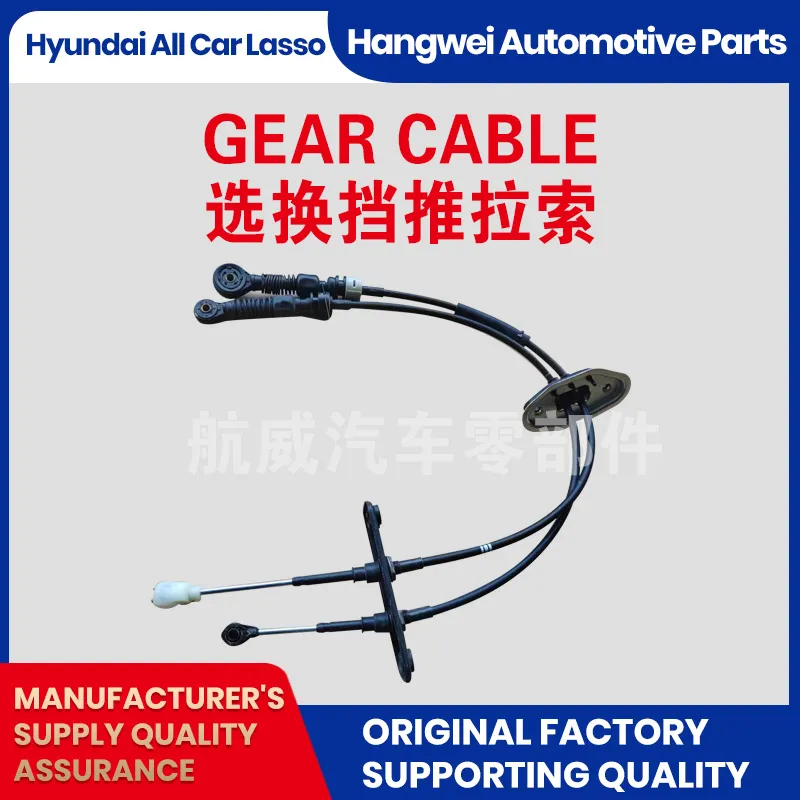Understanding the Importance and Functionality of Handbrake Cables in Vehicle Performance
Understanding Handbrake Cables Importance and Maintenance
Handbrake cables, often overlooked in vehicle maintenance, play a crucial role in ensuring vehicle safety and proper functionality. Essential for operating the parking brake, these cables enable drivers to secure their vehicle when it is stationary. Over time, however, handbrake cables can wear out or become damaged, leading to potential safety issues and costly repairs.
What Are Handbrake Cables?
Handbrake cables are the components that connect the handbrake lever, usually located in the vehicle's cabin, to the rear brake mechanism. When the driver pulls on the handbrake lever, the cable tightens, pulling the brake shoes or pads into contact with the brake drum or rotor, thereby preventing the wheels from moving. This mechanism is critical for ensuring that the vehicle does not roll away when parked, especially on inclines.
Typically made of durable materials such as steel or other alloys, handbrake cables are designed to withstand the rigors of daily use. Despite their robustness, they can still experience wear from exposure to the elements, friction, and the general stresses of driving.
Signs of Worn or Damaged Cables
It’s essential for vehicle owners to be aware of the signs that indicate their handbrake cables might be failing. Common symptoms include
2. Unresponsive Handbrake If pulling the handbrake lever does not result in the brake engaging, it may indicate a broken or damaged cable, requiring immediate attention.
handbrake cables

3. Visual Damage Inspecting the cables for signs of corrosion, fraying, or other physical damage can also help identify issues before they lead to more severe problems.
4. Strange Noises If the operation of the handbrake is accompanied by unusual noises—such as squeaks or grinding—this could suggest that the cables or associated components may need maintenance.
Maintenance and Replacement
To ensure the longevity of handbrake cables, regular maintenance is essential. Here are some tips vehicle owners can follow
- Regular Inspection Periodically check the condition of the handbrake and its cables during routine vehicle maintenance. Look for signs of wear and replace them timely to avoid failure. - Keep It Clean Debris, dirt, and salt from winter roads can build up and affect the performance of the cables. Cleaning them regularly can help extend their life.
- Proper Adjustment Ensure that the handbrake system is properly adjusted according to manufacturer specifications. An improperly adjusted system can lead to premature wear and reduced effectiveness.
In case dilapidation is observed, replacing the handbrake cables should be a priority. The replacement process typically involves lifting the vehicle, removing the necessary panels, and installing new cables. While this can be a DIY project for those with mechanical knowledge, consulting a professional mechanic is often wise to ensure safety and proper installation.
Conclusion
In summary, handbrake cables may not seem significant, but they are critical for vehicle safety. Regular maintenance and inspections can prevent accidents and ensure that your parking brake operates correctly. Understanding the importance of these cables can save vehicle owners from unexpected failures and extend the life of their braking system. Keeping an eye on the signs of wear and conducting timely replacements will ensure a safer and more reliable driving experience.
-
Workings of Clutch Pipe and Hose SystemsNewsJun.04,2025
-
The Inner Workings of Hand Brake Cable SystemsNewsJun.04,2025
-
The Secrets of Throttle and Accelerator CablesNewsJun.04,2025
-
The Hidden Lifeline of Your Transmission Gear Shift CablesNewsJun.04,2025
-
Demystifying Gear Cables and Shift LinkagesNewsJun.04,2025
-
Decoding Clutch Line Systems A Comprehensive GuideNewsJun.04,2025
